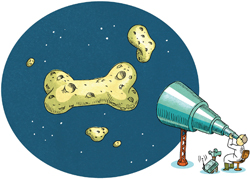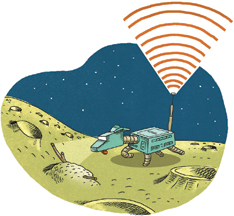Last spring, when President Obama announced “a new direction” for NASA, he wasn’t entertaining visions of space travel to Mars or a return to the moon. Instead, he and his advisers homed in on near-Earth asteroids. NASA now is pursuing a mandate to land a human on one of the 6,500 space rocks that enter Earth’s neighborhood in the next 15 years. The first step is to land a robot on an asteroid by 2015, says Andrew Cheng, chief scientist in the Applied Physics Laboratory’s Space Department who will oversee APL’s part of the project. That mission will give the agency more of a read on how to devise a subsequent manned landing.
 |
 |
|---|---|
| Find the right rock. “There’s a whole team at NASA arguing about what exactly that is,” says Cheng. Among the considerations are the rock’s size, shape, orbit, and rate of spin. “It needs to be big enough for a craft to land on and an astronaut to get around.” | Develop a robot. Private industry will offer up the rocket (at the cost of $100 million to $160 million), while NASA scientists focus on designing the robot that will measure the asteroid’s composition, gravity, and temperature, as well as the presence of ice, and nearby cosmic radiation. |
 |
 |
| Send the whole thing into space. Scientists will chart a safe route – one that exposes the craft to as little radiation as possible. Then, after the craft is launched into the ether, it and its robot payload will travel for up to a year before landing | Put the robot to work. The robot will collect information on the asteroid’s surface and interior, with a particular eye toward potential resources, and send data back via radio transmitter. It will also scout out a decent landing spot for humans, says Cheng. |
Illustration by Wesley Bedrosian
